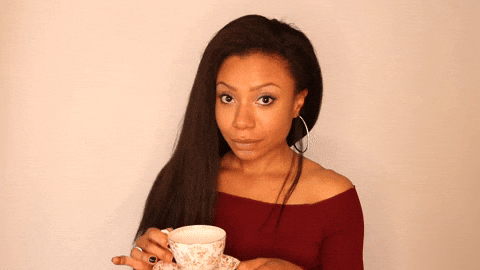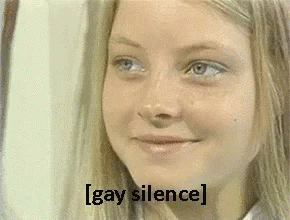Why kink absolutely belongs at Pride

It’s Pride month, and that means parades and parties all over the country celebrating LGBTQ+ freedom. It also means the revival of conversations over who is welcome at these events, or rather, who these events are really for. Year after year, the most common complaints are about the presence and involvement of police and of major corporations, due to the disproportionate targeting of LGBTQ+ people by police violence, and the corporate appropriation of queerness for profit.
Recently on social media, some members of the LGBTQ+ community have also expressed disapproval of displays of kink at Pride parades, sparking a debate about whether these kinds of displays are appropriate. In this instance, kink refers to outfits and gear including bondage, latex, leather, animal roleplay, etc. The main argument behind keeping kink out of Pride is two-fold: that kink is not appropriate for children, therefore preventing Pride from being “family friendly,” and that Pride should not be sexualized. However, these ideas are rooted in sex-negative fearmongering and heteronormative respectability politics.
Let’s break down why kink does belong at Pride:

Children don’t need to be protected from sexuality
One of the main objections to kink at Pride is that it is not appropriate for children. While some people have suggested that children shouldn’t be at Pride in the first place, excluding kids from Pride also excludes LGBTQ+ parents who either want to celebrate with their children or can’t afford childcare, as well as children who identify as LGBTQ+ or are questioning their identity. However, children can attend Pride without the essence of Pride having to change to accommodate them.
When people worry about Pride being family-friendly, it’s worth questioning their core assumptions about what being “family-friendly” means. For the most part, the representations of kink at Pride are simply playful outfits. Is it really more traumatizing or inappropriate for a child to see someone in a gimp suit than it is for them to see someone in a scary Halloween costume? Just because something is linked to or representative of sex doesn’t mean children will interpret it as sexual; however, it’s also important to note that children do not need to be protected from knowing that sex of various kinds exists. Creating a sex positive culture means embracing children’s questions about sexual expression rather than avoiding them altogether.
Also, when people argue that children should not be exposed to sexuality, it is also worth interrogating what kind of sexuality they are referring to. “Protecting children” is the same line of argumentation used to attack LGBTQ+ folks who hold hands or kiss in public or in movies and TV shows. But children are exposed to sexuality every single day, from lingerie models in Victoria’s Secret ads to princes and princesses kissing in Disney movies — but because it’s heterosexuality, it’s normalized.

How to talk about kink with children appropriately
There are plenty of age-appropriate ways to discuss and explain sexual things to children. When adults urge others to “think of the children,” they are actually trying to excuse themselves from having a conversation that they as parents are uncomfortable with. It’s really not that hard to explain to kids that some people like dressing up in leather or pretending to be dogs because they enjoy it.
Children understand that wearing fun things makes people happy, you don’t need to go into details. Just as we tell children that drinking or R-rated movies are for adults, it’s pretty simple to describe kink the same way: as dress up for adults. Or just as when a child sees a hetero couple kissing, an LGBTQ+ couple engaging in kink is just “something adults do to feel good that children need to wait until they are grown up to do.” As a parent, you are aware of what kinds of outfits (or lack of) will be at Pride, so if you do not want your child to see that or you are not ready to talk to them about it, there are plenty of child-oriented Pride events that you can attend instead.
Sexual freedom is a key part of Pride
The idea that LGBTQ+ people should police their sexuality so that Pride isn’t sexualized is directly at odds with the roots of the event and of LGBTQ+ culture itself. Pride is the anniversary of the Stonewall riots in New York City, which were violent protests led by LGBTQ+ people of color against discriminatory policing. This year marks the 50th anniversary of Stonewall, and honoring Pride’s roots of resistance is essential to the ethos of the occasion.
Pride is a defense of sexual freedom, and those attending should be free to behave in a sexual way. Being queer is not just about sex, but a large part of it is about the types of sex people have and who they choose to have it with. Pride is one of the only places where a lot of LGBTQ+ folks can be open about their identity, and sometimes that includes kink. If LGBTQ+ people aren’t allowed to wear what they want or be sexual in a space that’s supposed to be safe for their expression, we’ve forgotten the point of Pride. Pride is not about policing who can and cannot be who they are. Straight cis people need to keep in mind that Pride is for people who do not have the privilege of being comfortable in all of the spaces that they do; they have every other day of the year to go to parties that are exactly how they want them to be.
Arguing against the presence of kink at Pride is the same type of respectability politics that has kept LGBTQ+ relationships and pleasure from being centered in the same way that heterosexuality is. So much culture is sexualized, but it’s in a way that straight cis people are comfortable with. Kink is ostracized precisely because of its connection to queerness. Toning down or hiding those aspects of the LGBTQ+ community for the sake of those outside it is exactly the opposite of what Pride is about: making a space for LGBTQ+ people, by LGBTQ+ people. The people who have a bad impression of the LGBTQ+ community because they are offended by gay sex were never going to accept us anyways.

Seeing kink gear is not an issue of consent
Some people argue that the presence of kink at Pride violates the consent of those who don’t want to see it, and that it can be triggering for some. Of course we all want Pride to be inclusive and accessible, but simply seeing kinky outfit or gear is not the same thing as watching someone perform a kinky sex act or being asked to participate in one. Kinksters are not wearing harnesses or pup hoods because they are getting off on it, they are just being themselves and wearing what gives them pride. Furthermore, a lot of kink-related gear has been normalized into everyday fashion, from choker necklaces to harnesses, making it almost impossible to “ban” kink altogether.
Kink is a well-known and well-established part of Pride — there is an expectation that you know it will be there and by showing up you are consenting to the possibility of seeing it. Critics bringing up a lack of consent actually shows how little they know about kink, considering that kinksters are actually some of the most well-versed in consent. And it comes back to the kind of sexuality people are trying to police. Comparing seeing kinky outfits or gear to a violation of consent is along the same lines as saying that watching people kiss in public is a violation of consent because you didn’t agree to see it.
Instead of banning kink, let’s talk about police and corporations
One of the reasons that the idea of banning kink from Pride seems so ridiculous is that it is much less pressing (and less widely supported) than the push to ban police or certain corporate sponsorships from the parade. LGBTQ+ people have been protesting the inclusion of police in Pride for years, with some recent success in cities like Toronto and Edmonton. Pride started as a protest against discriminatory policing, and police violence towards LGBTQ+ folks has continued since, motivating many LGBTQ+ communities to close their celebrations from a group that actively targets them.
Recently, many corporations have received pushback for their involvement in Pride as well. A lot of companies have been accused of corporate rainbow-washing, i.e. profiting off of queerness without actually supporting LGBTQ+ communities. For example, selling rainbow gear during June and marching in the parade comes across as exploitative when the same companies don’t champion LGBTQ+ causes or hire LGBTQ+ employees for the remainder of the year. This year, current and former Google employees demanded that Google be banned from San Francisco Pride. They accused Google of rainbow-washing their corporate image while refusing to enforce their anti-harassment policies against monetized YouTube channels that direct bigotry and abuse toward LGBTQ+ people.

Kinksters are part of the LGBTQ+ community, and while there are LGBTQ+ individuals who work in law enforcement or at problematic corporations, it seems counterproductive to attack a group that is actually invested in the LGBTQ+ community rather than channelling critique on the institutions systemically targeting it.